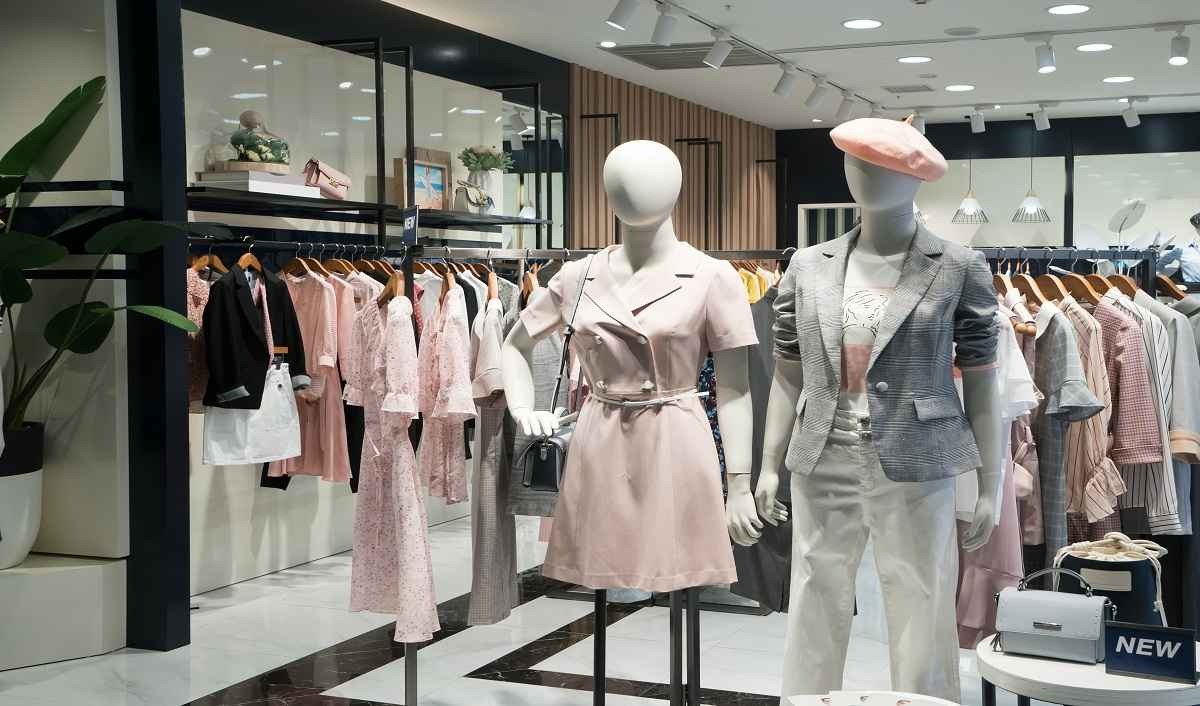How Sustainability is Shaping the Future of Fashion

The fashion industry has long been recognized for its significant environmental impact. From overproduction and excessive waste to unethical labor practices and harmful chemical use, traditional fashion has contributed to a host of ecological and social problems. However, in recent years, there has been a massive shift towards sustainability within the industry, driven by consumer demand for eco-friendly practices and a growing awareness of the fashion sector’s role in climate change. In this article, we explore how sustainability is reshaping the future of fashion, from eco-conscious production methods to the rise of ethical consumption.
The Growing Importance of Sustainability in Fashion
The fashion industry is one of the largest contributors to environmental degradation, responsible for around 10% of global carbon emissions. Additionally, the production of textiles involves vast quantities of water, chemicals, and energy, with synthetic fabrics like polyester contributing significantly to pollution. As consumers become more aware of these issues, the demand for sustainable and ethically produced clothing has surged. This shift is forcing brands to reevaluate their production processes and find ways to reduce their environmental footprint.
Sustainability in fashion isn’t just a trend; it’s becoming a necessity. Reports indicate that consumers, particularly millennials and Gen Z, are increasingly willing to pay more for products that align with their values. These generations have grown up in a world where the climate crisis and environmental issues are at the forefront of global conversations. As a result, they are seeking out brands that prioritize sustainability, transparency, and social responsibility.
The Rise of Sustainable Fabrics
One of the most significant ways sustainability is transforming the fashion industry is through the adoption of sustainable fabrics. Traditional textiles like cotton and polyester have long been the staples of fashion, but their environmental costs are high. Cotton cultivation requires vast amounts of water, while polyester, a plastic-based material, contributes to microplastic pollution in oceans and rivers.
In response to these issues, many fashion brands are turning to sustainable alternatives. Organic cotton, for instance, is grown without harmful pesticides and requires less water than conventional cotton. Other innovative fabrics include hemp, bamboo, and Tencel (a fiber made from sustainably sourced wood pulp). These materials are not only more eco-friendly but also offer superior qualities like durability and breathability.
Another groundbreaking development in sustainable fabrics is the rise of recycled textiles. Recycled polyester, made from discarded plastic bottles and old garments, has become a popular option for eco-conscious fashion brands. Additionally, there is growing interest in fabrics made from upcycled materials, such as old denim or repurposed fabrics from previous collections, contributing to the circular fashion model.
Eco-Conscious Production Methods
Sustainable fashion goes beyond just the materials used—it also encompasses how clothes are made. Traditional fashion production involves energy-intensive processes, toxic chemicals, and large amounts of waste. However, sustainable fashion brands are working to create more eco-conscious production methods.
One of the most significant advancements in production is the adoption of closed-loop systems. A closed-loop system ensures that materials can be reused or recycled, reducing the amount of waste that ends up in landfills. Brands like Patagonia and Stella McCartney have pioneered efforts to create garments with materials that can be recycled into new products, creating a circular system where resources are continually reused.
The use of water-efficient and low-impact dyeing techniques is another key development in sustainable fashion. Traditional dyeing methods use harmful chemicals and require large amounts of water, resulting in significant environmental harm. However, new technologies, such as waterless dyeing and plant-based dyes, are being adopted to reduce the impact of textile dyeing. By utilizing these methods, fashion brands can create colorful clothing while minimizing their environmental footprint.
The Role of Ethical Labor Practices
Sustainability in fashion is not limited to environmental concerns; it also encompasses social responsibility and ethical labor practices. The fashion industry has long been criticized for its reliance on low-wage labor in developing countries, where workers often face poor working conditions and exploitation.
In response to this issue, many brands are focusing on improving the ethical standards of their supply chains. Fair trade certifications, such as the Fair Trade Textile Standard, are becoming more common as brands ensure that their workers are paid fairly, work in safe environments, and have access to basic human rights. Brands like People Tree and Patagonia are known for their commitment to ethical labor practices, ensuring that their workers are treated with respect and dignity.
Additionally, transparency in the supply chain is becoming a key factor in consumer decision-making. Consumers are increasingly looking for brands that are open about where and how their products are made. Companies that provide detailed information about their sourcing practices, labor conditions, and production processes are gaining favor with eco-conscious consumers.
The Circular Economy and Fashion Rental Services
Another aspect of sustainable fashion is the concept of the circular economy. Instead of following the traditional linear model of “take, make, dispose,” where clothes are produced, worn, and discarded, the circular economy focuses on reusing, repairing, and recycling clothing to extend its lifecycle.
One of the ways the circular economy is being embraced is through fashion rental services. Clothing rental platforms like Rent the Runway and HURR Collective allow consumers to rent high-quality, designer garments for special occasions or everyday wear. This reduces the need for mass production of clothing and encourages consumers to access clothing rather than own it.
In addition to clothing rental, brands are increasingly offering repair and upcycling services. For example, brands like Patagonia and Levi’s provide repair services for their garments, encouraging consumers to extend the life of their clothes rather than discarding them. The practice of upcycling, where old garments are transformed into new pieces, is also gaining popularity, reducing waste and giving a second life to fashion.
Jewelry plays into this same philosophy. Instead of leaving unworn pieces forgotten in drawers, many people now choose to sell their jewelry to buyers who can repurpose materials like gold, silver, and gemstones. This not only keeps valuable resources in circulation but also gives sellers a chance to unlock the hidden value in items they no longer wear.
The Impact of Technology on Sustainable Fashion
Technology is playing an increasingly important role in driving sustainability in the fashion industry. From advanced fabric innovations to supply chain tracking, new technologies are helping fashion brands reduce their environmental impact and improve transparency.
Blockchain technology, for example, is being used to trace the origin of materials and ensure that garments are produced in a sustainable and ethical manner. By providing transparency, blockchain allows consumers to verify the sustainability claims of fashion brands and make more informed purchasing decisions.
In addition to blockchain, artificial intelligence (AI) and machine learning are helping fashion brands optimize production processes and reduce waste. AI can be used to predict consumer demand more accurately, minimizing overproduction and the environmental impact associated with unsold inventory.
Consumer Influence on Sustainable Fashion
Consumers are at the heart of the sustainability movement in fashion. As more people become aware of the environmental and social issues within the industry, they are demanding more ethical and sustainable choices from brands. Social media platforms, influencers, and environmental campaigns have played a crucial role in raising awareness about sustainable fashion, further fueling the demand for eco-conscious clothing.
Sustainable fashion isn’t just about making better choices for the environment—it’s also about educating consumers on how to buy smarter. By opting for higher-quality items that last longer, repairing old garments, and choosing second-hand or upcycled clothing, consumers can significantly reduce their environmental footprint. Brands, in turn, are responding to this shift by offering more sustainable options and being transparent about their practices.
The Future of Sustainable Fashion
As we look to the future, sustainability will continue to shape the fashion industry. The adoption of eco-friendly materials, innovative production methods, and ethical labor practices will only grow stronger. Consumers, increasingly aware of the environmental impact of their choices, will continue to demand transparency and accountability from fashion brands.
In the years ahead, we can expect to see even more innovation in sustainable fashion, with new materials, technologies, and business models emerging. The future of fashion lies in its ability to adapt to the challenges of the modern world, ensuring that the clothes we wear today don’t come at the expense of the planet or its people.
As sustainability becomes more ingrained in the fashion industry, it will transform the way we think about clothing. Rather than being disposable, fashion will become something that is valued for its longevity, craftsmanship, and environmental consciousness, ensuring a better future for both the industry and the planet.



